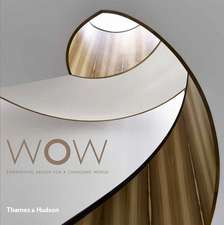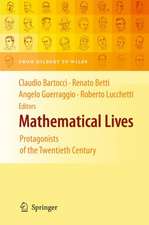Nexus Network Journal 10,2: Architecture and Mathematics: Nexus Network Journal, cartea 10,2
Editat de Kim Williamsen Limba Engleză Paperback – 16 oct 2008
Preț: 384.86 lei
Nou
Puncte Express: 577
Preț estimativ în valută:
73.65€ • 76.46$ • 61.41£
73.65€ • 76.46$ • 61.41£
Carte tipărită la comandă
Livrare economică 22 martie-05 aprilie
Preluare comenzi: 021 569.72.76
Specificații
ISBN-13: 9783764387655
ISBN-10: 3764387653
Pagini: 169
Ilustrații: 169 p.
Dimensiuni: 170 x 240 x 10 mm
Greutate: 0.34 kg
Ediția:2008
Editura: Birkhäuser Basel
Colecția Birkhäuser
Seria Nexus Network Journal
Locul publicării:Basel, Switzerland
ISBN-10: 3764387653
Pagini: 169
Ilustrații: 169 p.
Dimensiuni: 170 x 240 x 10 mm
Greutate: 0.34 kg
Ediția:2008
Editura: Birkhäuser Basel
Colecția Birkhäuser
Seria Nexus Network Journal
Locul publicării:Basel, Switzerland
Public țintă
ResearchCuprins
Letter from the Editors.- Letter from the Editors.- Canons of Form-Making.- Andrea Palladio (1508–1580).- Palladio, Pythagoreanism and Renaissance Mathematics.- A Formal Language for Palladian Palazzo Façades Represented by a String Recognition Device.- A Perspective Analysis of the Proportions of Palladio’s Villa Rotonda: Making the Invisible Visible.- The Doric Order as a Fractal.- Roaming Point Perspective: A Dynamic Interpretation of the Visual Refinements of the Greek Doric Temple.- The Turkish Baths in Elbasan: Architecture, Geometry and Wellbeing.- Mathematics as the Vital Force of Architecture.- Didactics.- The Use of Linear Fractional Transformations to Produce Building Plans.- Geometer’s Angle.- Dynamic Root Rectangles Part Three: Root-Three Rectangles, Palladian Applications.- Book Reviews.- Branko Mitrovié and Stephen R. Wassell (eds.) Andrea Palladio: The Villa Cornaro in Piombino Dese.- Deborah Howard and Laura Moretti (eds.) Architettura e Musica nella Venezia del Rinascimento.
Textul de pe ultima copertă
This volume features a collection of papers dedicated to "Canons of Form-Making", in honor of the 500th anniversary of the birth of architect Andrea Palladio (1508-1580). Theorist as well as practitioner, Palladio's architecture was based on well-defined canons that he had gleaned from studying the treatises as well as the remains of architecture from antiquity. Palladio himself left to posterity not only his large corpus of built works, but his Quattro libri d'architettura. Three of the papers in this issue are specifically about Palladio and his work. The other papers deal with canons of form-making, ancient and contemporary.
Caracteristici
Special issue on "Canons of Form-Making" to celebrate the 500th anniversary of the birth of Renaissance architect Andrea Palladio Guest edited by Stephen R. Wassell, Palladio scholar and author of "Andrea Palladio: Villa Cornaro in Piombino Desi" New research by renowned scholars such as Lionel March and Carl Bovill Ten in-depth studies of form generation in architecture through the use of mathematical principles






























